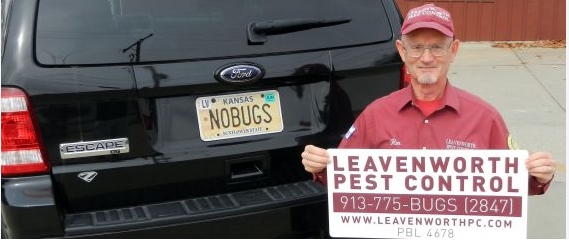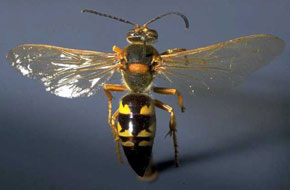Cicada Killer Wasps
Sphecius speciosus
Color: | Cicada killer wasps have a black body with yellow marks across the thorax and abdomen. They have a large stinger, and the sting can be very painful. |
Legs: | Six |
Shape: | Wasp-like |
Size: | 1 1/8 and 1 5/8 inches long. |
Antennae: | True |
Habits:
Cicada killers are solitary wasps. Males tunnel out of the ground to select a new territory for mating. Shortly after mating, females dig deep burrows, and upon completion seek out a cicada, paralyze it with a sting, and lay an egg on the paralyzed body. Within two weeks, the egg hatches into a larva, eats the cicada, and develops into a pre-pupal stage over winter. Adults emerge in the spring to repeat the cycle.
Habitat:
Cicada killer wasps prefer areas with little or no vegetation, and will nest in lawns, parks, sandy lots, or the edges of forests. They will be more prevalent in areas where annual cicadas are present.
Threats
Wasps pose significant health threats to humans as they may sting repeatedly and can cause allergic reactions. Stinging insects send over 500,000 people to the emergency room each year.
Prevention:
Remain vigilant and call a pest professional if you suspect wasp activity. Control requires specialized equipment and safety precautions. Do not leave sweet drinks or meats in accessible areas. For example, clean up and remove food and trash after picnics and outdoor events.
This site powered by JnJ Technologies.





















